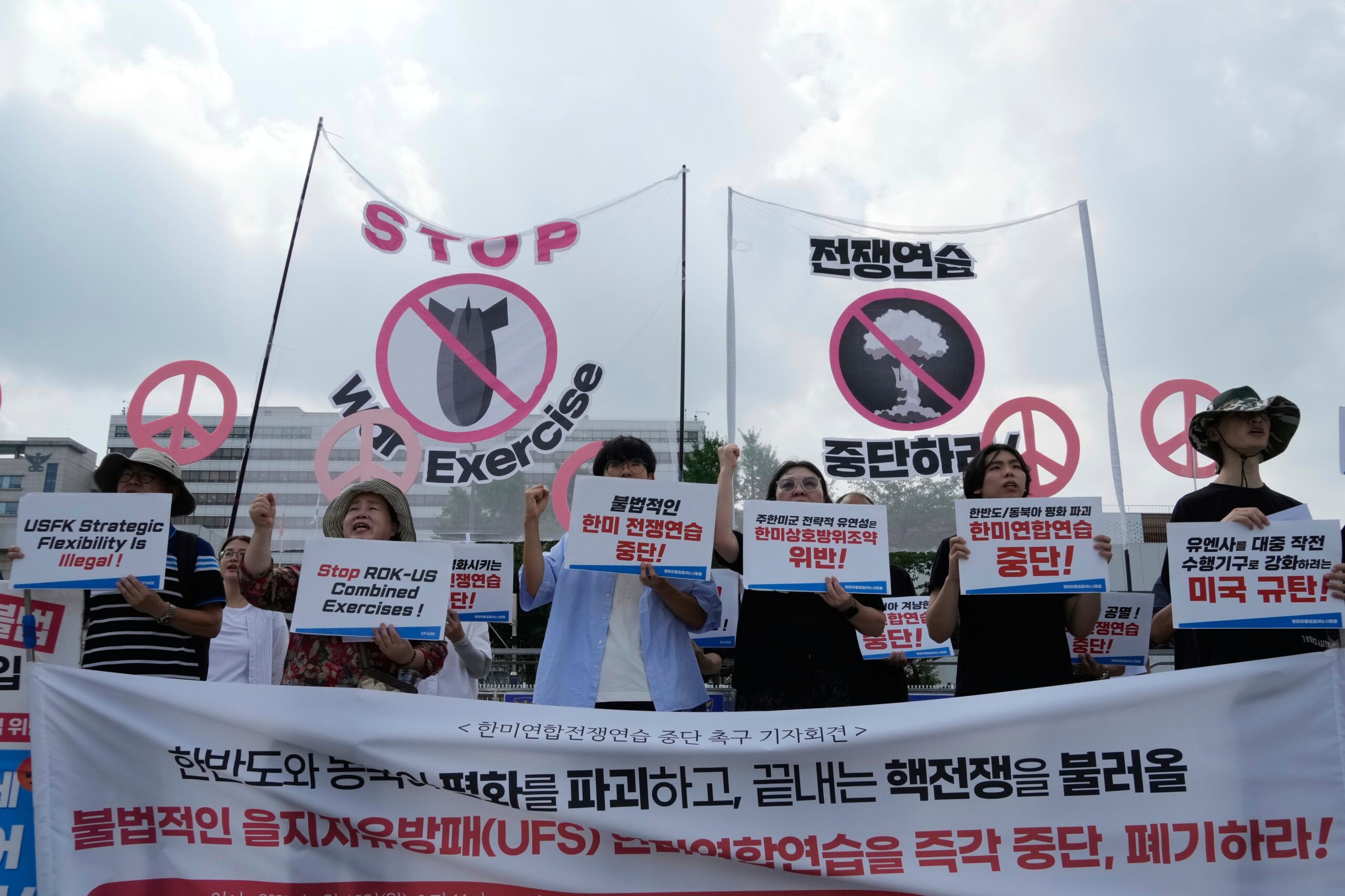SEOULIn an effort to better handle threats from nuclear-armed North Korea, which has warned that the exercises will exacerbate regional tensions and promised to retaliate against any provocation on its territory, South Korea and the United States began their yearly large-scale joint military exercise on Monday.
During the 11-day Ulchi Freedom Shield, which is the second of two major exercises that South Korea holds each year after the first in March, 21,000 soldiers—including 18,000 South Koreans—will participate in field training and computer-simulated command post operations.
Suggested Videos
North Korea, which has historically depicted the allied exercises as invasion rehearsals and frequently exploited them as a pretext for military demonstrations and missile tests aimed at furthering its nuclear program, may respond to the exercises, which the allies characterize as defensive.
North Korean Defense Minister No Kwang Chol said in a statement last week that the exercises demonstrate the partners’ military confrontational posture with the North and that its troops will be prepared to retaliate against any provocation that crosses the border.
For South Korea’s new liberal president Lee Jae Myung, who is getting ready for a summit with US President Donald Trump in Washington on August 25, Ulchi Freedom Shield comes at a critical juncture. As Washington turns its attention more toward China, Trump has sparked worries in Seoul that he would destroy the long-standing alliance by calling for increased payments for the American military’s presence in South Korea and perhaps cutting it.
Although relations have soured in recent years as North Korean leader Kim Jong Un accelerated his weapons program and deepened alignment with Moscow following Russia’s invasion of Ukraine, tensions on the Korean Peninsula remain high as North Korea has dismissed Lee’s calls to resume diplomacy with its war-torn rival.
In response to North Korean threats, Seoul’s previous conservative government increased military drills with the United States and demanded more robust U.S. guarantees for nuclear deterrence. This infuriated Kim, who last year abandoned long-term reconciliation objectives and amended the North’s constitution to declare the South a permanent enemy.
Lee, who assumed office in June, said in his most recent message to Pyongyang on Friday that he would try to reestablish a 2018 inter-Korean military pact intended to ease border tensions and that North Korea should react to the South’s attempts to restore confidence and restart negotiations.
The 2018 military pact, which was made during a brief diplomatic session between Kim and South Korea’s former liberal president Moon Jae-in, established no-fly zones above the border and buffer zones on land and at sea to avoid conflicts.
However, in 2024, citing tensions over North Korea’s launches of balloons loaded with trash toward the South, South Korea canceled the agreement and recommenced its propaganda and military operations on the front lines. Following North Korea’s announcement that it would no longer adhere to the deal, the action was taken.
The South Korean Defense Ministry stated on Monday that there are no imminent plans to halt live-fire training close to Korea’s disputed maritime boundary in response to a question about how the Lee government’s actions to restore the agreement will impact the allied drills.
Due to heat concerns and flood damage to some training fields, U.S. military officials refuted South Korean media rumors that the shortened drills were intended to make room for diplomacy with the North, even though the allies had delayed half of Ulchi Freedom Shield’s initially scheduled 44 field training programs until September.
Trump has demanded that South Korea pay more for the 28,500 American troops that are stationed there since the beginning of his first term. Senior Trump administration officials, such as Undersecretary of Defense Elbridge Colby, have made public remarks indicating a desire to reorganize the alliance, which some analysts believe may have an impact on the number and function of American personnel in South Korea.
According to experts, this strategy may leave Seoul with less advantages but more expenses and hazards as South Korea would play a bigger part in thwarting North Korean threats while American forces concentrate more on China.
During a recent meeting with reporters, U.S. Forces Korea commander Gen. Xavier Brunson emphasized the importance of modernizing the alliance to deal with the changing security landscape, which includes North Korea’s nuclear aspirations, its growing ties to Russia, and what he described as Chinese threats to an open and free Indo-Pacific.









